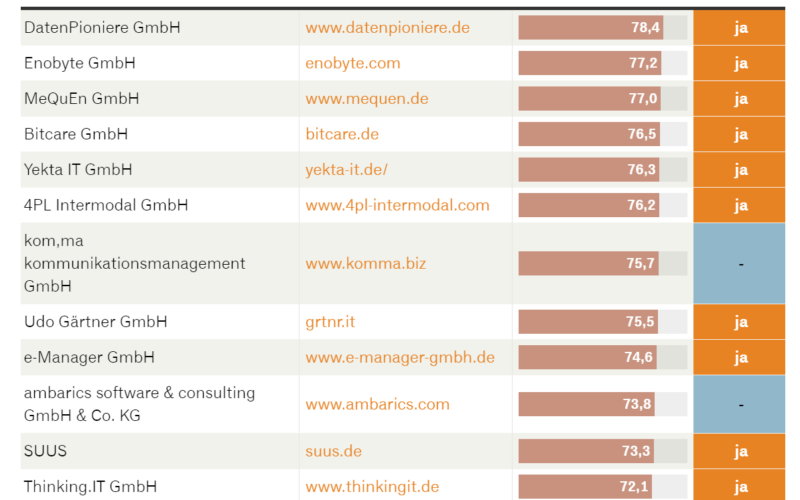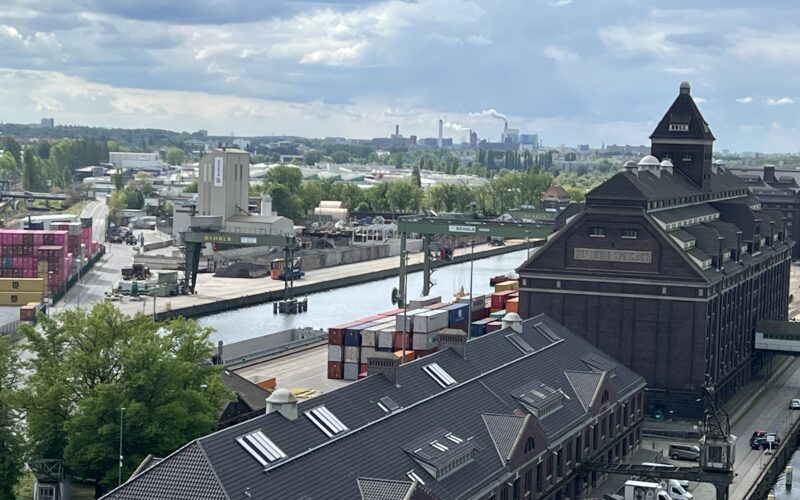Hypernetworks – 6 scientific views
On Tuesday, 22.03.2022, international scientists gave keynote speeches at the HEGEL kick-off event. This summary contains the most important points and findings from the six different keynote speeches.
Prof. Dr. Lóri Tavasszy: “Super- and Hypernetworks: A Physical Internet perspective”
In logistics, the meaning of the word “network” is more than just transportation and even more than intermodal transportation. Besides transportation and transhipment, there are storage, ordering, shipment size, etc. considerations and decisions to be taken into account. The Physical Internet has made this architecture explicit. There are different layers and different decisions that can be made, and these are interconnected in the Physical Internet.
A hyperconnected network is an open network, where everything is connected to a certain degree and can be accessed by all other nodes in the same open service. While supernetworks for transportation are typically used for routing in an intermodal transport network, hypernetworks in the PI context will imply a system optimum for many more, if not all logistics choices. It can be compared to everything as a service where all different services are connected.
The term ‘hypernetworks’ was introduced in 1978, but it almost disappeared since 2002. Nowadays, hypernetworks are hardly used in the transportation field, but they are being reintroduced in other areas such as ICT and the Physical Internet because of hyperconnectivity. The term hyperconnectivity originates mainly from the Physical Internet line of research where the perspective goes beyond transportation and includes other logistics functions such as warehousing, handling, and even manufacturing.
How networks coordinate and try to optimize themselves can nowadays be separated into human decision-making and automated optimization and calculation. Once automation proceeds and more decisions can be made using AI, the difference between human and non-human decision-making will become smaller. This will make it easier to describe and optimize complex networks.
Dr. François Combes: “The assessment of logistics technologies and systems”
How can the performance of freight transport systems be assessed? How can this assessment be ground for the implementation of public policy? The assessment paradigm is very important in answering these two questions. The paradigm states what people think the system should be, what people think the system is, whether there is a difference between these two representations and whether people should act to bring the current system closer to what they think the system is. If the paradigm is wrong, then the system may move in the wrong direction or fail to move in the right direction.
The classic assessment paradigm is based on a static representation of transport supply chains, but supply chains are often almost absent from the representation. The following assumptions are made in this representation: Scarce datasets, strong aggregation, limited cost perimeters, perfect competition, and full information available to everyone. This paradigm is helpful for several questions, but others were completely failed to understand correctly in this framework. Some of these questions concern the long-term trends of supply chains, supply chain robustness or resilience, the true added value of ICT systems, transportation and warehousing, the energy transition, and finally, the strategies of stakeholders regarding data sharing. To address these questions there is a need for a representation where more things are made explicit. Some of the methodological directions which could go towards this kind of representation tangibly would be leveraging supply chain data sets and big data sets (these two are not the same thing).
Prof. Dr. Gerard de Jong: “Treatment of networks in current freight transport models”
Oftentimes in the network models that are employed in practice, both in freight and passenger transport, assignments are unimodal. There are two ways to deviate from this standard approach. The first is multimodal network assignment, in which the assignment not only carries out the route choice but also the mode choice. The other alternative is to handle multimodality in the demand model. This means not trying to do all things within the assignment but trying to take out as many things as possible from the assignment. The way to implement this is to do only unimodal assignments.
From the scheme of these unimodal networks, transport time and transport distance – also to and from transhipment points, are calculated. The next step is called chain building. Chain building means that from times and distances from unimodal networks, transport chains are formed, which could be unimodal or multimodal. Furthermore, chain building defines a choice set. From this choice set, the alternative that will be used is selected either by minimization of the total logistics cost or from a logit model. This step is called chain choice. And once there are the transport chains, unimodal or multimodal, the resulting OD trips for each mode are collected and assigned unimodally to their own network.
Prof. Dr. José Holguín-Veras: “Complex Challenges and the Perils of Ignoring the Efficiency Paradox”
Transport is a major consumer of energy. Between 1970 and 2014, there was a tremendous increase in energy efficiency. However, during the same period, the energy consumption from freight activity increased. This development can be explained by looking at William S. Jevons “The Coal Question” (1865). Jevons concluded that the development of a new technology that leads to efficiency increases over time is going to induce demand. Another fundamental insight is that new technologies are needed, and more efficient systems are also needed, but they are only part of the solution. Concluding, demand and supply co-evolve. The demand increase produced by new technology, sooner or later, will outweigh the economic benefits of the substitution of the old technology. Therefore, demand management is crucial.
The only way to escape the ‘Efficiency Paradox” is to put in place complementary initiatives–freight demand management–to limit the overuse of a new technology. These initiatives ought to focus on the agents that creates the demand for freight travel as they are the ones that create the freight traffic, not the freight carriers. The research conducted clearly indicates that these initiatives–using incentives, education campaigns, and other tools–are effective to induce beneficial changes. The off-hour delivery in New York City is estimated to have induced 1,500 businesses to make low-noise deliveries at night voluntarily.
Dr. Pietro Evangelista: “Technologies in the logistics industry enabling optimization of services across networks”
The transportation and logistics industry is a very dynamic industry. Digitalization and automation are key aspects that allow logistics service providers to develop networking and integration of logistics processes. Considering the large number of digital technology available, cloud computing may be one of the most promising applications that could be implemented on a large scale in logistics.
A cloud-based digital freight platform could increase the efficiency of the industry, allow introducing new services and develop a new business model in the sector. The main advantage of such a platform is to provide a possibility for a logistics service provider to move from their manual, expensive and rigid approach to a more automated, efficient, and agile approach. In addition, the freight platform provides opportunities to speed up the process toward the “Digital Logistics Service Provider” (DLSP). However, an IT gap between shippers’ expectations and the technology capabilities of LSPs still exists. The existing IT gap relates to large LSPs. It is probably of a greater magnitude as most companies in the industry are small and very small companies.
Several existing elements may slow down the adoption of the technology, especially when looking at applications like supernetworks or hypernetworks. Challenges to achieving the status of a DLSP are low level of innovation in the industry, insufficient investments for digitalization, low level of digital expenditure in small and medium-sized LSPs and a shortage of staff with digital capabilities.
The logistics industry now, from the technology and innovation point of view, has become very complicated in comparison to the past. The key question is how this complication will be translated into a business opportunity for the company in the future. Platforms and cloud computing are two potential tools in that regard. Looking at small and medium-sized companies, the idea to develop a platform is for them an opportunity to increase IT skills in the company and manage the business digitally. Discussing it with many managers, the main problem they have is that on the market there is a very large number of applications, and they are completely not aware of what is the best product for their business.
Prof. Dr. J. Rod Franklin: „The challenge of logistics interoperability”
Thirty-five years ago, people struggled with what they are struggling with today – how to integrate different logistics messages. There are different standards, and making it even more complex, there are different measurements. How to communicate requires translations, and there is no real simple way today to do that. There are a lot of wireless communications channels that are available to communicate via IoT devices, and all of them are used.
Beyond the issue of standards, there are hard-nosed business issues with widely sharing transport data such as competition, pricing, volumes, products, promotions, etc. although EU efforts are currently under way to open public transport data. Transport data platforms are emerging like the Industrial Data Space, Gaia-X, etc. but they are marketplaces for mobility data exchange, they do not integrate the data, which is a problem. Therefore, new standards bodies are emerging as the EU’s DTLF efforts to build more integration standards.
The unfortunate problem for concepts like the Physical Internet is that an existing set of operational practices exist. Therefore, consistent, ongoing, and real-time freight transport data sharing will require a lot more work to be realized. Data exchange is something that requires standards. Regarding whom will set standards, it might be done by a giant player like Amazon, but probably that is not something that will happen. The challenge is to ask the players in the industry to unwind all the investments they have already made in how they communicate internally and with their current partners, which is a rather big challenge. There is a different approach, that is currently being the example of language translation machines, as machines are getting smart enough. If you feed them enough examples, they can create a neutral back end allowing them to get something shoved in from one side and then translate it and retranslate it back out to the other side.
Your personal B2B contact

Nils Olaf Klabunde
Geschäftsführung
Nils-Olaf Klabunde ist seit über 20 Jahren im intermodalen containerisierten Güterverkehr in unterschiedlichen Positionen aktiv.




